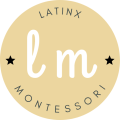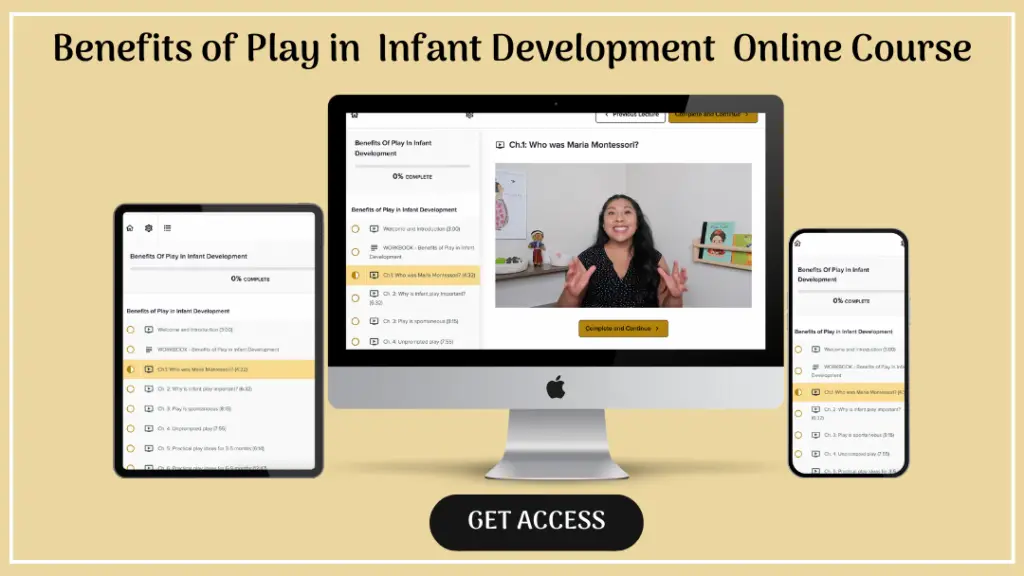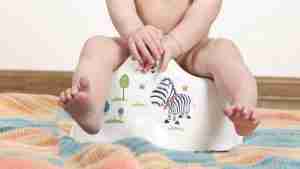
5 Developmental Benefits Of Black And White Cards For Infants
How black and white contrast cards help in developing newborns’ vision
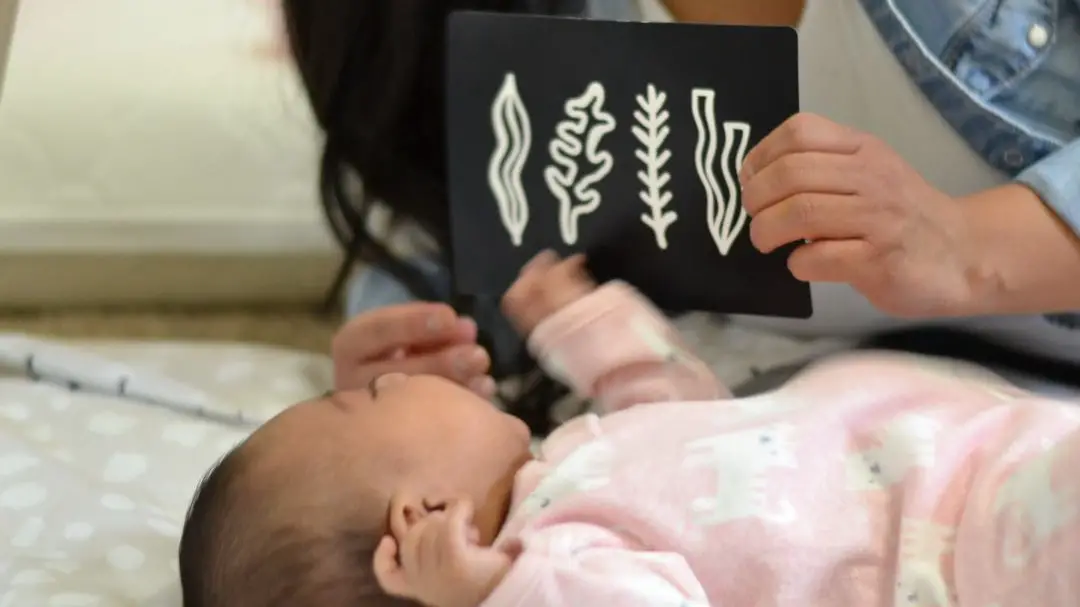
*Disclosure: I only recommend products I would use myself and all opinions expressed here are our own. This post may contain affiliate links that at no additional cost to you, I may earn a small commission. Thank you for your support!
You’ve probably seen videos of my daughter looking at black and white cards or me working with my infant using black and white images. Montessori black and white cards are very common. But do you know why, as a Montessori guide, I recommend the use of black and white cards for infants.
When children are born, their sense of sight is not fully developed and they need visual stimulation to help them develop their vision. This is when simple high contrast black and white cards for infants come into play.
In this article, you will learn:
- The main benefits of using black and white cards for babies
- Why Montessori environments use black and white objects
- When you should start using infant black and white cards
- How to use black and white images with infants
- How long babies should look at black and white contrast cards
I am excited to share with you the advantages of using black and white cards with your baby, so let’s get started!
Benefits of black and white cards for infants
We are so used to decorating our baby’s Montessori room or play area with bright colors like red and yellow. You may even decorate their nursery with pink or blue, depending on your child’s gender.
These colors do very little for newborns since they are still developing their sense of sight. One thing parents overlook are activities that help develop your child’s vision. Newborn black and white cards have so many benefits in your child’s development.
- Cognitive development. Babies can recognize and engage with simple black and white images. As babies interact with black and white contrast cards, they process a lot of information and get the opportunity to think, explore, and learn.
- Visual development. Newborns can focus on objects placed at a maximum distance of about 8-11 inches away from them. Since your newborn baby has limited color perception, using high contrast black and white cards will help them develop their vision and teach their eye muscles to coordinate with their brain.
- Attention span. Babies cannot focus on objects for a long time. As their vision develops, they’ll be able to look at objects for a minute or two. Since babies are able to interpret black and white images better, they will begin to engage with these images for longer periods of time.
- Stimulate the optic nerve. The optic nerve carries messages from the retina to the brain to create visual images. Placing black and white contrast cards and moving them slowly side to side stimulates a newborn’s optic nerve.
- Help with vocabulary. In addition to placing black and white images in front of your baby, you can describe what these objects are: “this is a square, this is a triangle, this is a ball.” As you show these objects to your babies, they will develop their vision, hearing, and vocabulary.
Why Montessori black and white contrast cards?
Remember that newborns can recognize high contrast images (black on white, white on black) placed at about 8-11 inches from them. Setting these black and white images on the ground during tummy time or on their mobile as they lay down is ideal.
The best high contrast images you can use are simple images like geometric shapes and simple patterns. I designed printable black and white cards to help with your child’s development and you can get them on my Etsy shop.
These are the same black and white contrast cards I used with my infant. You can check out one of my Reels here.
Are black and white patterns good for babies?
Do babies see black and white better? The simple answer is yes. Simple images are a good way to start but as your child’s sense of sight develops, you can begin showing them more complex images and patterns. The printable black and white images I created include geometric shapes, botany, and patterns.
At what age should you start using black and white flash cards with a baby?
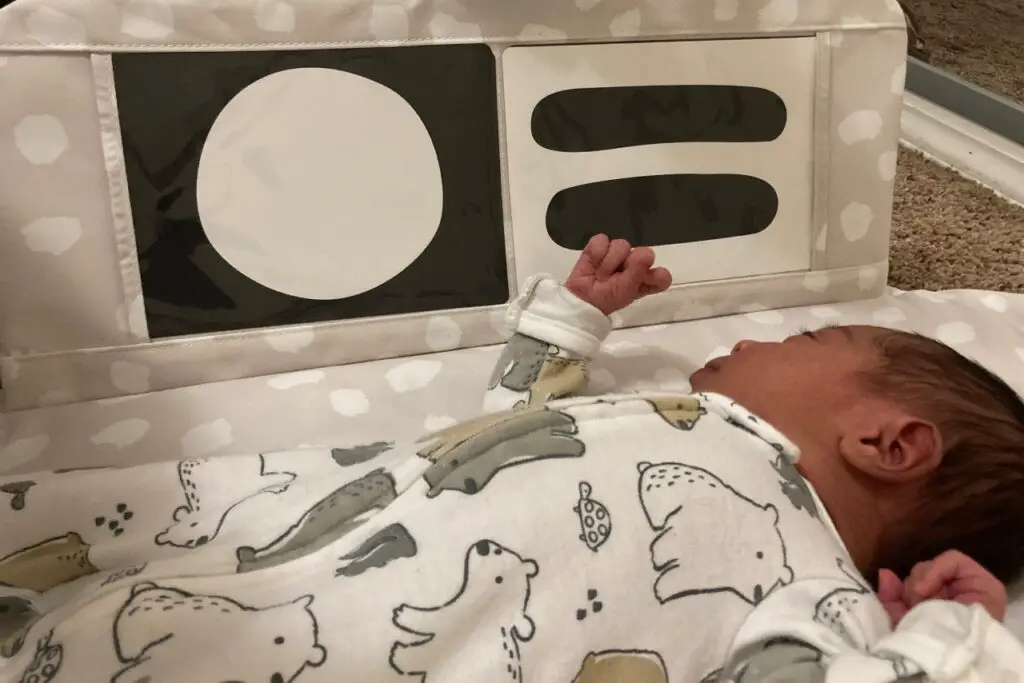
You can begin using high contrast images right after birth. Since newborns don’t have a fully developed sense of sight, using black and white images at this age will provide a lot of visual stimulation.
During the first few weeks, images may appear blurry, but as their vision develops, they will begin to recognize objects better. This is why it is very important to use high contrast images to support your baby’s cognitive development.
How do you use black and white cards with babies?
Creativity and imagination is the limit. But for someone who is new to using infant black and white cards, this can be a small challenge. Here are some activities you can do with your newborn with black and white images.
- During tummy time. As your newborn does tummy time, you can place a black and white card right in front of him. Allow your baby to lift his head and observe the image.
Your baby may only be able to keep his head up for a couple of seconds at first, but as his muscles and vision get stronger, he’ll be able to focus on the card for longer periods of time. - Place black and white images next to his floor bed. If you are using a Montessori floor bed, you can place black and white cards next to her floor bed where she can see them. If your baby lays on her back, help her look to her side and observe the cards.
- Add black and white contrast cards to your baby’s mobile. Many mobiles come with little animals or cute figures. But when it comes to your child’s development, it might be best to replace these figures with black and white cards.
- Make a book. If you bought my black and white cards on Etsy, you can make a simple black and white image book. This helps to keep all the images together and you can take them with you anywhere.
- Place them in front of your baby. As your baby begins to crawl or roll, place black and white cards around his play area and encourage your baby to reach for them.
- Have a conversation. As you show each black and white card to your baby, narrate what she sees. A conversation can be as simple as: “this is a triangle. The roof of our house is shaped like a triangle.”
- Tape them around your house. Tape a few black and white images around your house. As you walk with your baby, identify each card and allow your baby to observe.
- Display them in front of your baby’s car seat. A great way to make your baby’s ride fun and enjoyable is by placing black and white cards in front of him. Simply tape some infant black and white images on the back seat. As you run errands, your baby will be engaged and focused on the cards.
Where to get high contrast infant black and white cards
As mentioned earlier in this article, I created my own printable black and white cards to use with my infant. These cards gradually get more complex. You can purchase these newborn black and white cards on my Etsy store.
Another great product I recommend is the Play Gym by Lovevery. The Play Gym comes with a set of black and white cards that can be placed in the Focus Zone of the play gym. I consider the Play Gym a must have item to aid in the overall development of your child.
Newborn black and white cards FAQ
Here are the answers to common questions about the use of black and white cards for infants. After you read through this section, you will have a better understanding on how to use infant black and white cards.
Are black and white patterns good for babies?
The short answer is yes. It’s best to start with simple objects like the geometric shapes I created, but once your child develops his sense of sight, you can begin using more complex images like patterns.
My black and white cards for infants were strategically created. Once your baby is able to recognize simple shapes, she can progress to the next set of black and white objects and eventually patterns.
How long should a baby look at black and white cards?
Newborn babies can only focus on objects for a second or two since they are still developing their vision. As babies get older, they can focus on black and white images for longer periods of time.
I really credit the use of high contrast black and white cards for my child’s development. We started using them right after birth and once her sense of sight improved, she was able to focus on other objects like lights, picture frames, and people!
Why are contrast cards good for babies?
Placing black and white images in front of your infant will help him develop his sense of sight. Some of the main benefits of black and white cards are improved cognitive development, visual development, increased attention span, and stimulation of the optic nerve.
At what age are black and white images good for babies?
You can begin using black and white cards with your newborn immediately after birth. Babies grow up very fast, and so does their brain. The best way to contribute to your child’s development is to do activities that stimulate their development, including the use of black and white cards.
Which color is best for brain development?
Black, white, and shades of gray stimulate your child’s brain development. When babies come into this world, these are the colors they can distinguish better since their vision is still developing.
Black and white images send strong signals to their brain. These signals stimulate brain growth and help in visual development.
Why are black and white flashcards good for babies?
High contrast black and white cards are a necessary tool for your baby’s development. You can use black and white cards during tummy time to stimulate your baby’s vision and cognitive abilities.
Final thoughts on benefits of black and white cards for infants
When you look at your newborn baby, you may think that he or she is just laying there not doing much. But in fact, your baby is taking in a lot of information and all their senses are being stimulated.
The use of black and white contrast cards plays a huge role in your infant’s visual development. Placing black and white images in front of them stimulates their optic nerve and helps them transform messages into images.
Now that you know the benefits of black and white cards, go and have fun with your child. As you show your baby black and white images, narrate what you see and engage in meaningful conversations.

Hello, I am Leslie. I am on a mission to help you support the growth and development of your child. With the right tools and proper guidance, you can navigate parenthood with confidence and assertion! My goal is to equip you with knowledge to help you construct a strong foundation for your child’s life.
Suggested articles
You May Also Like
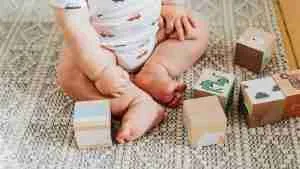
9 Best Cause And Effect Toys For Babies
These 9 cause and effect toys will promote your child’s cognitive development and visual, gross, and fine motor skills.
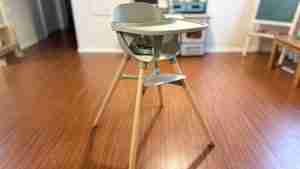
Lalo high chair review: Know this before you buy
The Chair by Lalo is a 3-in-1 high chair that can be converted into a toddler play chair and a booster seat and is designed to support your baby even before they can reach the footrest.
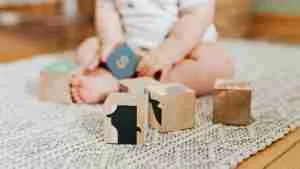
Montessori stages of development: The 4 planes
The four planes of development are distinct periods in your child’s life, each characterized by unique developmental needs, challenges, and growth opportunities.
